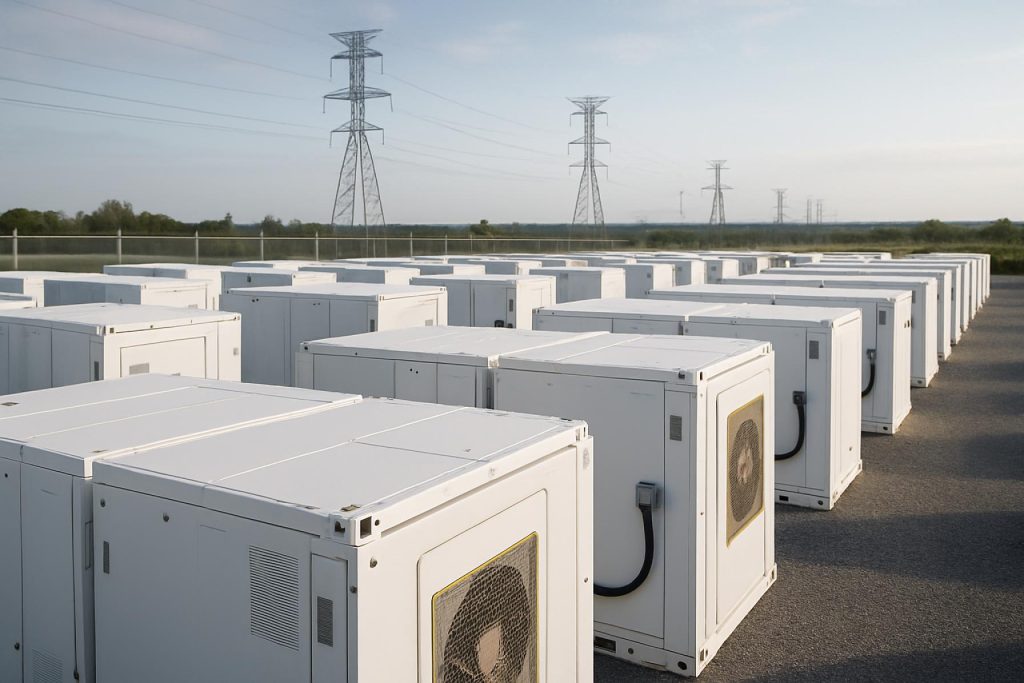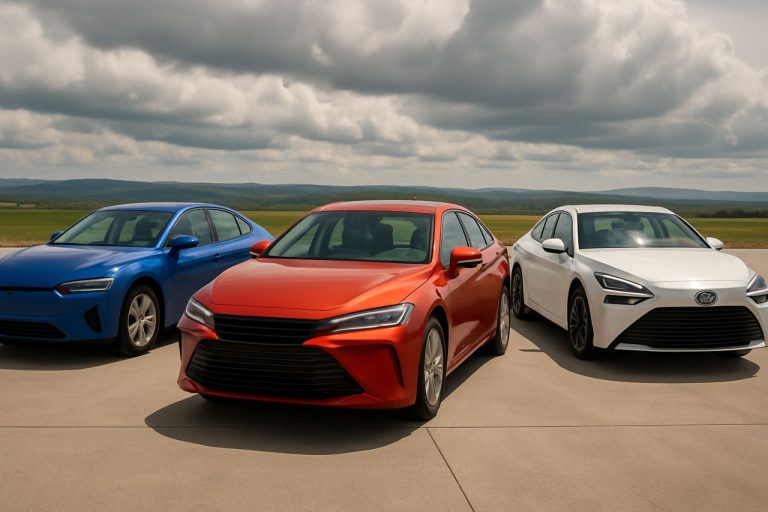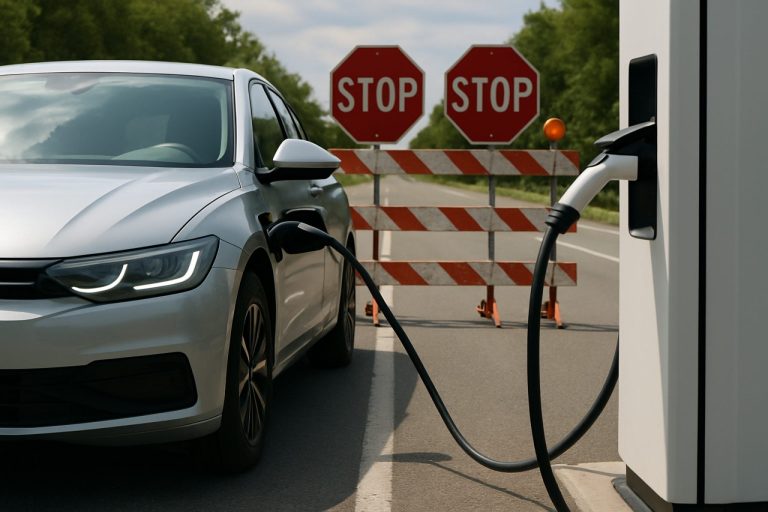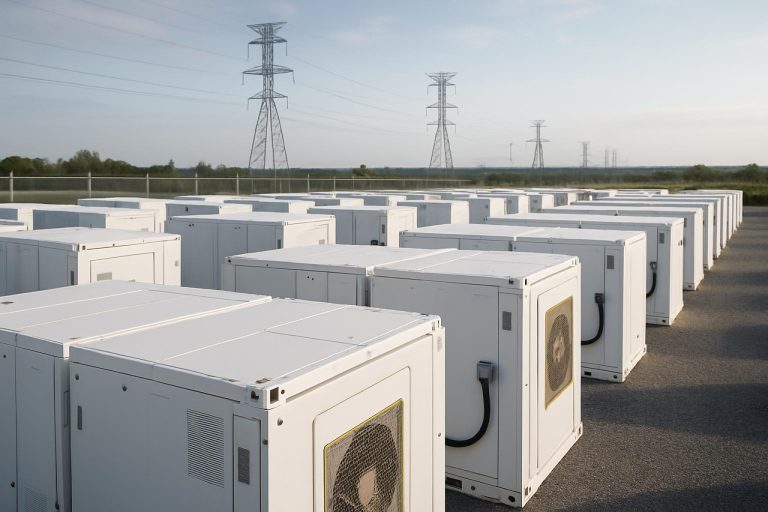
- Congress is advancing legislation that could severely disrupt America’s growing battery manufacturing industry and jeopardize the electric vehicle (EV) boom.
- The bill removes key tax credits and incentives for U.S.-made EVs, batteries, and critical minerals, threatening investments by major automakers and partners.
- Industry leaders warn that EV sales could drop by up to 40% by 2030, and nearly 130,000 anticipated manufacturing jobs may disappear, particularly impacting regions like Michigan, Georgia, and Kentucky.
- Rolling back incentives risks a renewed dependence on China’s battery supply chain, undermining American clean energy leadership and national competitiveness.
- Proposed changes jeopardize progress made under the Inflation Reduction Act, risking steep declines in battery output and stalling climate change initiatives.
- The Senate’s upcoming decision is pivotal for the future of U.S. manufacturing, jobs, clean technology, and global leadership in energy.
The halls of Congress reverberated with tension as lawmakers advanced sweeping legislation that could unravel one of America’s fastest-growing industries. On Thursday, the House of Representatives, split starkly along party lines, pushed through a bill whose effects reverberate far beyond the world of politics. This bill threatens the very engine of America’s electric vehicle boom—its surging battery industry—and risks upending thousands of high-tech jobs, hard-earned industrial momentum, and the country’s newfound role as a clean energy leader.
Deep Roots, Sudden Uprooting?
Since 2022, a surge of new plants, partnerships, and hiring sprees has positioned the United States as a serious contender in the global battery race. Industrial giants like Hyundai, General Motors, and LG Energy Solution have poured billions into vast factories rising from Southern farmland and Midwest industrial parks. Battery manufacturing—a sector long dominated by China’s CATL and a handful of Asian conglomerates—was finally taking root on American soil, powered by unprecedented tax credits and policy incentives.
Now, the ground is suddenly shifting. The new House bill aims to pay for tax cuts and expanded defense by axing key climate provisions, erasing the very incentives that convinced companies to bet big on U.S. battery capacity. Gone would be rebates for new electric vehicles (EVs) assembled in North America, as well as tax credits for U.S.-made battery cells, packs, and the critical minerals that supply them.
Immediate Consequences, Far-reaching Pain
The impact would be startlingly swift. Experts warn that annual EV sales could drop by as much as 40% by 2030—an abrupt reversal of a trendline that had pointed upward, fueled by climate goals and technological breakthroughs. Factories that just broke ground might never open. According to energy researchers and analysts, of the 128 battery manufacturing and processing projects announced since 2022, a staggering majority remain in limbo. And nearly 130,000 anticipated jobs—many in blue-collar, economically struggling regions—could simply vanish.
States like Michigan, Tennessee, Nevada, Georgia, and Kentucky stand on the precipice. Here, hopes of an industrial revival—built on clean energy, innovative products, and skilled jobs—collide with political headwinds. Congressional representatives from these very states, often vocal defenders of the battery renaissance, now stand accused of voting away their constituents’ economic future in favor of immediate fiscal maneuverings.
China’s Shadow and America’s Gamble
As legislative changes threaten domestic battery growth, geopolitical stakes loom large. China overwhelmingly dominates the global supply chain for batteries, holding sway over critical minerals and advanced manufacturing know-how. Rolling back U.S. incentives could push automakers and suppliers back into the embrace of overseas producers, underscoring America’s continued reliance on foreign factories.
Meanwhile, policies restricting Chinese involvement in U.S. battery facilities add complexity to an already tangled web—not just for new investors, but for multinational companies whose supply chains cross continents.
The Broader Climate and Economic Cost
The Inflation Reduction Act didn’t just sweeten deals for automakers; it tied incentives to emissions reductions, pushing manufacturers to clean up fleets and raise fuel economy standards. Rolling this back undermines not only EV demand but broader climate progress, threatening American competitiveness and hard-fought environmental gains.
Indeed, projections warn battery manufacturing could tumble by 75% by the end of the decade, plunging from the 1,050 gigawatt-hours envisioned to a meager 250 GWh. The fallout would reach far beyond the car industry, stalling green infrastructure and innovation, and ceding leadership to global rivals.
The Road Ahead: Uncertain—and Pivotal
The bill’s fate now rests with the Senate, with just weeks before a self-imposed Independence Day deadline. The stakes are unmistakable. Will America choose to double down on clean industrial leadership, securing jobs and advancing technology? Or will it risk a retreat to the status quo—offering short-term fiscal relief at the cost of future prosperity, innovation, and sustainability?
The key takeaway: At this crossroads, America’s vision for its industrial and environmental future hangs in the balance. The decision will shape not just the next fiscal year, but the next generation of manufacturing, energy, and leadership on the world stage.
Learn more about global energy and transportation trends at Bloomberg and get an international perspective on clean mobility from IEA.
Stunning Setback: Will Congressional Politics Derail America’s $100 Billion EV Battery Boom?
Deepening the Crisis: What Lawmakers Aren’t Saying About the EV Battery Industry Shakeup
The recent House vote to eliminate key climate incentives is far more than a budget battle—it could devastate America’s fast-growing electric vehicle (EV) battery sector, stall environmental progress, and push U.S. industrial leadership back into global dependence.
What the Source Didn’t Reveal
1. Current Size and Market Value
– U.S. EV battery manufacturing, spurred by landmark federal support, is projected to represent well over $100 billion in investments over this decade (IEA).
– Battery production capacity in the U.S. has grown over 500% since 2021, making it one of the world’s fastest scaling clean-tech sectors.
2. Real-World Use Cases & Industry Impacts
– U.S.-made battery cells power not just cars but also buses, grid storage, and military equipment—loss of incentives could slow innovation for emergency preparedness, public transit, and broader electrification.
– Major automakers (Ford, GM, Hyundai) have commitments with American battery partners; contracts, hiring, and supply deals are at risk.
3. Major Features, Specs & Pricing
– Recent federal incentives require EVs to use North American–assembled battery packs and American-mined or allied-country-sourced critical minerals to receive up to $7,500 in consumer tax credits.
– Typical EV battery packs cost between $7,000–$12,000; without subsidies, vehicle sticker prices rise sharply, discouraging adoption.
4. Security & Sustainability
– Overseas battery and mineral dependence presents serious national security risks—China refines 60% of global lithium, 80% of cobalt, and dominates 70%+ of EV battery cell production (IEA).
– Domestic battery supply helps cut emissions throughout the manufacturing chain, improving America’s global climate credibility.
5. Long-Term Market Trends & Forecasts
– Rivian, Tesla, and other U.S. companies are planning new gigafactories relying on projected credits; many projects are now suspended or under “review.”
– BloombergNEF projects without incentives, U.S. EV adoption could lag behind the EU and China by up to five years.
6. Controversies, Limitations, and Political Realities
– Some critics argue U.S. subsidy requirements were already tough, disqualifying numerous popular models and small automakers.
– There’s debate over short-term cost savings versus long-term economic and climate harm. Several Senate Republicans from battery-plant states have not publicly committed to supporting the current House legislation due to risk to local jobs.
7. Compatibility, Tutorials, & How-To Steps
– How to Check If Your EV Is Made in America: Consumers can verify EV eligibility for federal tax credits using the U.S. Department of Energy’s VIN checker tool and by confirming the vehicle’s assembly origin and battery component disclosure (refer to official government sites).
– Hacks for Maximizing Incentives: Consider plug-in hybrid deals, secondary market credits, or state-level incentives if federal policies are rolled back.
8. Pros & Cons Overview
Pros (With Incentives Remaining):
– Rapid manufacturing job growth
– Reduced emissions, improved air quality
– Decreased reliance on overseas supply chains
– Cheaper EVs for U.S. consumers
Cons (If Incentives Withdrawn):
– Higher costs for consumers
– Loss of up to 130,000 planned jobs
– Slowed innovation, possible factory closures
– Reduced global competitiveness
—
Pressing Reader Questions—Answered
How quickly would consumers feel the impact?
Immediately: Federal EV credits could disappear for vehicles delivered just weeks after the law’s passage, causing sudden price jumps and canceled orders.
Which states are hardest hit?
Michigan, Tennessee, Georgia, Kentucky, Texas—host dozens of gigafactories either under construction or planned. These states expected tens of thousands of jobs.
Will China re-dominate the market?
Very likely: Without American incentives, global automakers may turn to established Chinese battery makers and supply chains, potentially increasing national security risks.
Does this kill the Inflation Reduction Act’s green impact?
Substantially: The IRA’s projected emissions reductions come largely from transportation electrification and clean manufacturing. Gutting battery incentives halves the effectiveness, making it harder for the U.S. to honor Paris climate pledges.
Are any credits or incentives likely to survive?
Some state incentives may remain, but these are far less generous and vary widely. Industry insiders expect major pullback unless the Senate intervenes.
—
Reviews & Comparisons
– U.S. vs. EU/China: The EU and China both continue to ramp up EV incentives and domestic production mandates. If the U.S. steps back, industry experts warn, North American EVs could be 10–20% pricier than Chinese alternatives by 2026.
—
Actionable Recommendations and Quick Tips
– For Buyers: Act now—if you’re shopping for an EV, lock in eligible purchases as soon as possible before federal credits are repealed.
– For Investors: Monitor Senate decisions closely; battery sector stocks and associated ETF funds may see sharp volatility.
– For Workers: Stay engaged with local labor unions and workforce retraining programs. Some states may offer support for affected workers.
– For Policymakers: Consider transition provisions—phased changes soften economic shocks and preserve investment confidence.
Final Take: The Coming Weeks Will Shape America’s Clean Energy Destiny
America’s place in the global battery and EV industry hangs in the balance—decisions made in the next month could propel the U.S. forward as a clean energy leader or send billions in investment, thousands of jobs, and climate gains overseas.
For updates and deeper analysis on the global transition to clean transportation and battery supply chains, visit Bloomberg and IEA.
Stay informed. Act quickly. The future is being written now.



